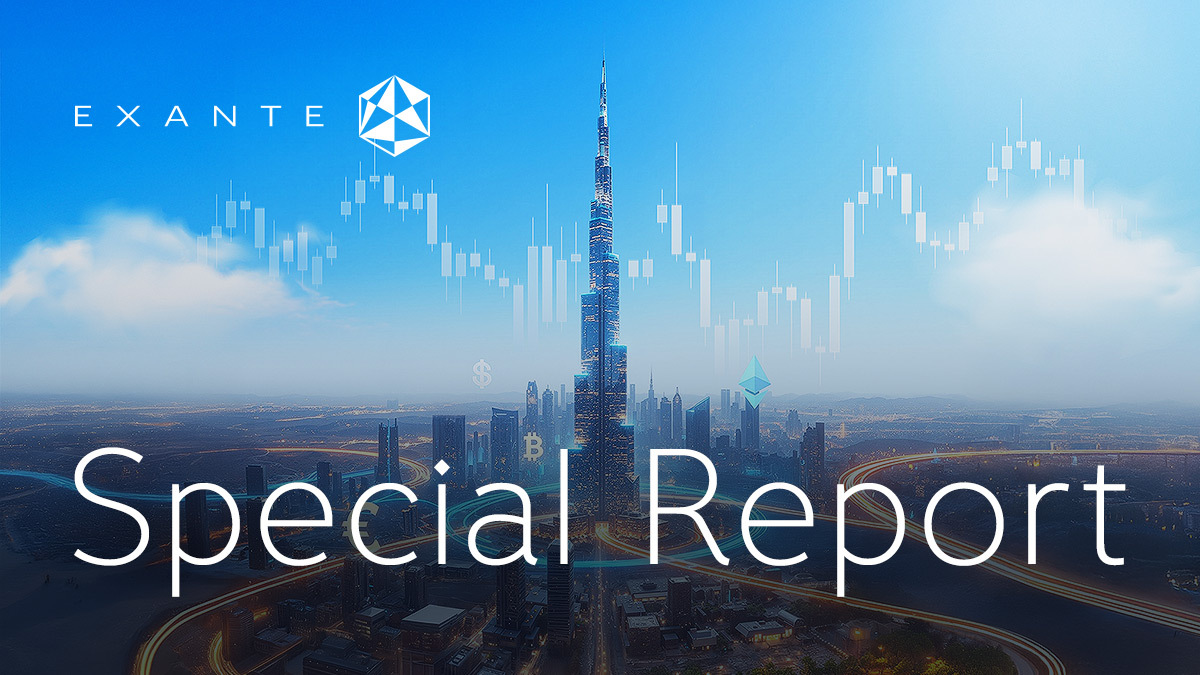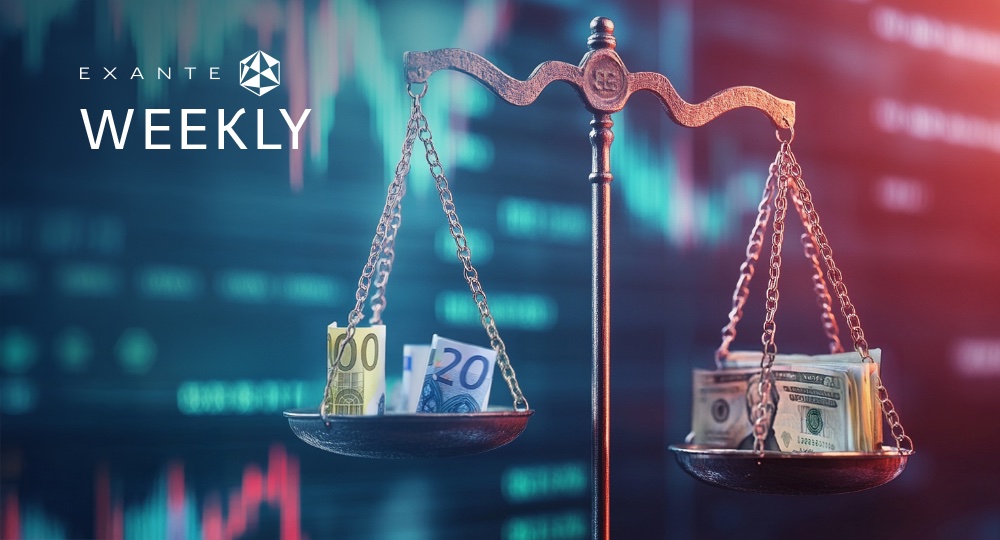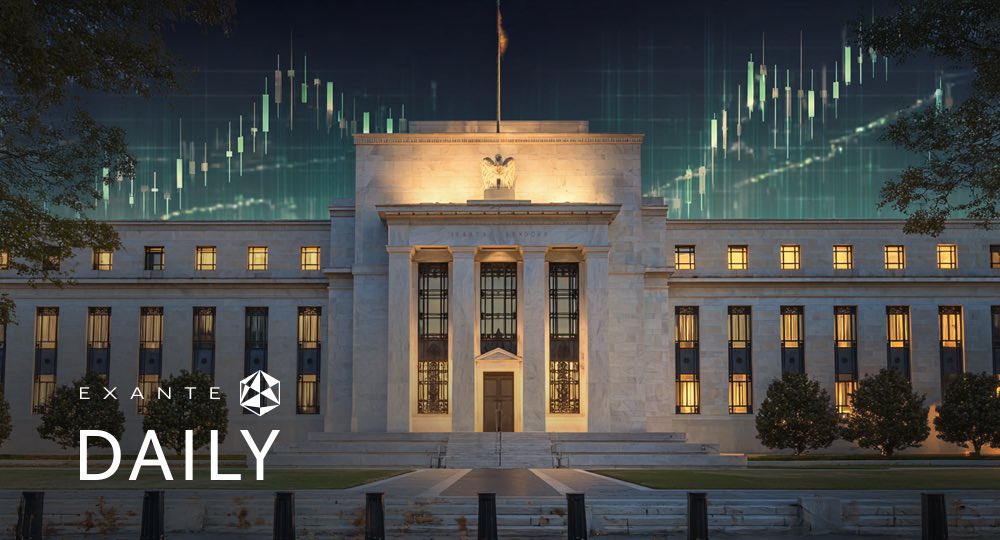
Can markets stay in the sweet spot?

- Markets in January
- Global market indices
- Currencies
- Cryptocurrencies
- Fixed Income
- Commodity sector news
- Global Macro Updates
- Key events in February
Markets in January
With the gain in Treasury yields reversing and the dollar weakening as the prospect for rate cuts got closer, investors came into January celebrating. Equity markets such as the S&P 500 did rally in January on expectations of continuing economic growth in the US, cooling inflation in the US, UK and Europe and highly anticipated central bank cuts to interest rates remain on the cards. US government bonds made their biggest gains of the year after weaker than expected employment data and slowing labour costs pacified markets. The yield on the benchmark 10-year Treasury note fell 19.7 basis points during the month of January, meaning it posted its best monthly price performance since October 2023. Although, as noted by the Financial Times, the US Treasury has announced that it would increase the size of auctions at most maturities for the next three months, with two-year and five-year auctions hitting record sizes, with the five-year auction in April, for $70 bn expected to be the biggest ever for debt with a maturity of two years or more, the higher yields associated with increased issuance, may be limited. This is because this is likely to be the last big issuance for a while. The Treasury said, “Based on current projected borrowing needs, Treasury does not anticipate needing to make any further increases in nominal coupon or FRN [floating rate note] auction sizes for at least the next several quarters.”
As we move into February, markets now find themselves somewhat disappointed and uncertain, with stocks having their worst day in four months after Fed chair Jerome Powell said he doesn’t think it’s likely the central bank will cut rates in March. “I don’t think it’s likely that we’ll reach a level of confidence by the time of the March meeting. I don’t think that’s the base case.” He added, “We want to see more good data. It’s not that we’re looking for better data, we’re looking for a continuation of the good data we’ve been seeing.”
Although this may have been a disappointment to investors who had hoped for a quick dovish pivot, the Fed did as was expected; it kept rates on hold, and held true to its higher for longer statement. It did, however, acknowledge that “risks to achieving its employment and inflation goals are moving into better balance.”
So all is not lost for investors as expectations of continuing disinflation and US growth remaining strong are supportive to the markets rosy outlook. However, although it is highly probable that we will see a slowdown in goods inflation towards the Fed target and there is a firming expectation of rate cuts by Q2, it is unlikely that inflation itself will remain at that level given the still strong demand push coming from a structurally tighter labour market. There are also growing concerns around excessive valuations, particularly in the “magnificent seven” stocks in the S&P 500, as margins will face pressure in the medium term from a still high rate environment, wage pressures and above target inflation.
The Changing Economic Picture
The US economy grew more in Q4 than anticipated, growing 3.3%. US consumer confidence also rose in January. The Conference Board said its consumer confidence index increased to a two-year high, rising to 114.8 in January, up from a revised 108.0 in December. Job growth does appear to be slowing with data from the ADP Research Institute showing companies added a smaller-than-expected 107,000 jobs in January, and worker pay growth slowed. However, this is still a tight labour market and business activity levels continue to rise, with the S&P Composite PMI reaching a seven-month high of 52.3. The manufacturing and services activity index came in at 50.3 and 52.9 respectively.
The eurozone economy has managed to avoid a technical recession but its largest economy, Germany, is still experiencing anaemic growth. Business activity appears to be slowing with the eurozone's HCOB Composite PMI January remaining entrenched in contractionary territory despite rising to 47.9 in January from 47.6 in December. Manufacturing activity also remained in contractionary territory in January with the HCOB Manufacturing PMI climbing to 46.6 in January from December's 44.4, still firmly below the 50 mark separating growth in activity from contraction. The HCOB Manufacturing PMI for Germany rose to 45.5 in January from 43.3 in December, increasing for the sixth month in a row. Cyrus de la Rubia, Hamburg Commercial Bank (HCOB) chief economist, said, "Such a trajectory suggests that growth might make a comeback within the next few months.” Output, new orders and purchasing activity all fell at the slowest rates for several months, the survey showed. However, the impact of rising geopolitical risks are coming through as supplier delivery times were affected by delays to shipments from Asia due to the events in the Red Sea. Eurozone headline inflation was at 2.4% in January, lower than December’s 2.9% (which still had some base effects coming into play), but above market expectations. Core inflation in January, a key measure watched by the ECB, only fell to 3.3% from 3.4%.
In the UK the economy surprised to the upside in January with the S&P Global Composite PMI rising to 52.5, up from 52.1 in the previous month although the manufacturing PMI continued its decline, falling to 47 from 47.3 in December. Shop price inflation dropped to 2.9% in January from 4.3% in December. Sharp falls in energy prices since the BoE published its last forecasts on 2 November mean that the BoE is expecting inflation to be at its 2% target in the not too distant future. The Bank of England kept rates on hold today at 5.25%, with BoE Governor Andrew Bailey saying, “We need to see more evidence that inflation is set to fall all the way to the 2 per cent target, and stay there, before we can lower interest rates.” The bank softened its language on the interest rate outlook by dropping its warning that "further tightening" would be required if more persistent inflation pressure emerged. Instead, the BoE said it would "keep under review for how long the Bank Rate should be maintained at its current level.”
Global Market Indices
US
S&P 500 +3.31% MTD
Nasdaq 100 +1.87% MTD
Dow Jones Industrial Average +2.06% MTD
NYSE Composite +0.35% MTD
According to LSEG I/B/E/S data, the 23Q4 Y/Y blended earnings growth estimate is 6.1%. If the energy sector is excluded, the growth rate for the index is 9.7%. Of the 176 companies in the S&P 500 that reported earnings by 31 January for 23Q4, 80.1% reported above analyst expectations. This compares to a long-term average of 66%.The 23Q4 Y/Y blended revenue growth estimate is 3.1%. If the energy sector is excluded, the growth rate for the index is 4.3%.
Europe
Stoxx 600 +1.46% MTD
DAX + 0.91% MTD
CAC 40 +1.51% MTD
FTSE 100 -1.33% MTD
IBEX 35 -0.24% MTD
FTSE MIB +1.39% MTD
Global
MSCI World Index +1.46% MTD
Hang Seng -9.16% MTD
Mega cap stocks had a mixed January but were strongly hit by the Fed stating that rate cuts would not happen as quickly as the market had been anticipating, which caused Meta Platforms, Amazon, Microsoft, and Alphabet to experience their biggest daily drops since late October, while Apple and Nvidia fell the most since 2 January. However, Alphabet, Amazon, Nvidia, Meta Platforms, and Microsoft were all up in January although Alphabet and Microsoft shares have been hit after releasing their Q4 reports. Alphabet reported revenue from its core search advertising business fell short of estimates while investors worried over Microsoft’s rising costs to develop AI features. The company forecast operating expenses of $15.8 billion to $15.9 billion in the current quarter, up from $15.4 billion in the previous one. Apple and Tesla were down in January. Apple was forced to remove a blood oxygen tracking feature from two of its flagship watch models in the US amid an IP dispute. Tesla fell after Chief executive Elon Musk warned investors of a potential slowdown in the company's revenue growth in 2024 and it reported a fall in fourth quarter gross margin and warned of "notably lower" vehicle sales growth this year. Musk said Tesla would shift its focus to producing a cheaper electric car model, which is expected to launch in the second half of 2025.
Energy stocks had a mixed and volatile month as investors weighed the rising geopolitical risks against earnings outlook. Phillips 66 and Energy Fuels were up in January after Phillips 66 beat quarterly profit estimates, helped by strong refining margins and gains from its midstream unit, sending its shares up 2.6% to an all-time high of $146.11. Energy Fuels benefitted from uranium prices hitting their highest in more than 16 years. Marathon Petroleum was also up after beating quarterly profit estimates, supported by strong refined product margins and high refinery utilisation rates. Occidental Petroleum Corporation, BP, ExxonMobil, Chevron, Baker Hughes Company, Apa Corp (US), and Shell were all down on the month. Shell reported lower annual profits due to energy prices falling last year. Halliburton was down this month despite beating quarterly profit expectations, helped by strength in its drilling and evaluation business.
Materials and Mining stocks had a generally poor January on a stronger dollar, concerns over demand from China, and an oversupply of Lithium and Nickel. Mining stocks Freeport-McMoRan, Newmont Mining, and Sibanye Stillwater were down. Nucor Corporation was up after the company reported fourth-quarter earnings of $3.16 per share and that it expects earnings in the first quarter of 2024 to increase compared to the fourth quarter of 2023. Materials stocks also had a bad month with Albemarle, CF Industries Holdings, Yara International, Mosaic and Celanese Corporation all down in January as the S&P 500 2023 Q4 earnings showed the materials sector -20.7%.
Commodities
Oil prices gained slightly in January in response to the widening geopolitical tensions in the Middle East, an escalation of attacks on commercial ships in the Red Sea, and concerns about demand dropping in China, the world’s second largest importer. Oil was also hit in January by a temporary shutdown in production in North Dakota in the US due to extreme weather while unrest curbed Libyan output. Markets also had to weigh the potential for production cuts to continue from OPEC and for Venezuelan supplies to become more limited if the US reimposes sanctions. In terms of supply itself, OPEC oil output in January registered the biggest monthly drop since July as several members implemented new voluntary production cuts agreed with the wider OPEC+ alliance. OPEC pumped 26.33 million barrels per day (bpd) in January, down 410,000 bpd from December, according to a Refinitiv survey. December's total strips out Angola, which has left OPEC. However, this concern has been somewhat outweighed by the growth in US crude stockpiles.

Currencies
The dollar fell in January as bonds rallied. Although the GBP is -0.33% MTD against the USD, it has been one of the strongest performing currencies so far in 2024, mostly due to the prospect of higher for longer interest rates in the UK vs the Eurozone and the US. The EUR -1.98% MTD against the USD. With inflation falling in the Eurozone’s largest economies and growth remaining stagnant overall, traders are anticipating that the ECB may move to cut rates as early as April despite ECB President Christine Lagarde previously suggesting that a rate cut would not be considered until June.
Cryptocurrencies
Bitcoin +1.21% MTD
Ethereum -0.44% MTD
Crypto markets were moved by the SEC approval of Spot Bitcoin ETFs on 10 January which opened up exposure to Bitcoin to investors. However, Bitcoin continued to fall through most of January largely due to exits from Grayscale’s GBTC, which converted from a trust following the SEC’s decision. A report by CoinShares indicates a total outflow since conversion to just over $5 billion as of 26 January.
Fixed Income
US Treasuries 10 year yield to 3.94%.
German 10 year yield to 2.17%.
UK 10 year yield to 3.79%.
Treasury yields slid following the Fed statement that it doesn't expect to cut interest rates until there is more evidence that inflation is moving lower. Markets are now pricing in only a 36% chance of a March rate cut according to CME's FedWatch Tool, while futures markets are now pricing in a nearly 90% chance of a rate cut in May.
In Europe, the ECB, despite keeping rates on hold at 4% during its January meeting, sounded confident that inflation was coming under control, resulting in a rising market belief that policy easing could start early in Q2. Investors now see 140 basis points worth of interest rate cuts this year and see a close to 100% chance of the first move coming in April although there are still calls by ECB policy makers such Slovak Central Bank Governor Peter Kazimir and Dutch Central Bank Governor, to take any cuts slowly to be certain the eurozone has sustainably achieved its inflation target.
In the UK the Bank of England kept its key lending rate at a 16-year high of 5.25% today and delivered a new forecast that shows inflation would “fall temporarily” to its 2 % target in the second quarter before increasing to 2.75% for the remainder of the year.
Note: Data as of 5:00 pm EST 31 January 2024
Global macro updates
The Fed remains in a holding pattern. On 31 January the Fed decided to keep the benchmark federal funds rate at between 5.25% and 5.5%. The Fed said that “the economy has made good progress toward our dual mandate objectives. Inflation has eased from its highs without a significant increase in unemployment…but inflation is still too high, ongoing progress in bringing it down is not assured, and the path forward is uncertain. Powell said he doesn’t think it’s likely the central bank will cut rates in March. In a sign that officials are not in a hurry to reduce rates, the central bank also said it “does not expect it will be appropriate to reduce the target range until it has gained greater confidence that inflation is moving sustainably toward 2%.”
China’s off to a weak start in 2024. China’s official manufacturing purchasing managers’ index contracted for the fourth straight month in January, rising to 49.2 from 49.0 in December. This was driven by a rise in output. Although an improvement, it is still below the 50-mark separating growth from contraction. The new orders sub-index was at 49.0, contracting for the fourth month. Weak external demand also dragged on manufacturing activity, with the new export orders index registering at 47.2, contracting for the 10th straight month. The weak manufacturing figures, on top of a slew of lacklustre data and negative economic news, appears to reinforce the need for more stimulus to prop up growth. China's central bank Governor Pan Gongsheng unexpectedly announced a cut to banks' reserve requirement ratio last week and has now imposed securities lending restrictions in a bid to prop up Chinese stock markets. It has also lowered down payments required on property while the government has also increased support for developers. In short, Chinese authorities are now facing a daunting battle as they try to revitalise the economy in the face of a continuing property downturn, local government debt risks, deflationary pressures due to weak domestic demand, and falls in global demand.
What to think about in February 2024
There are a number of risks and opportunities for investors as we move into February. Although US inflation is expected to fall further in Q1, there are concerns that the strength of the labour market and the still low rate of unemployment could lead the Fed to worry about excess demand creating inflationary pressures. However, as markets have continued to largely rally since the start of 2024, we may see a broadening out from the magnificent seven stocks leading that market growth, with a wider focus on the valuations of mid cap stocks in particular. Regardless of the specific region, it is clear that global geopolitical risks are rising. With the election cycle heating up in the US, this is likely to cause further party political infighting and this will continue to weigh on sentiment as it may influence policy making with significant geopolitical impact, up to the election. There are also continuing tensions in the Middle East with Yemen's Houthi group saying it would keep up attacks on US and British warships in the Red Sea, stoking fears of long-term disruption to global trade and the potential impact this will have on oil prices, supply chains and the fight against inflation as the costs of shipping increase and company profit margins may be lowered. There is also the ongoing war in Ukraine, which is causing a further rift in the US while EU countries have together committed to provide €21 bn worth of weapons to Ukraine in 2024 and a €50 bn financial support package, although the financial support must still be agreed in the wider EU’s budget. The vote is set to take place at the end of February.
Key events in February
The potential policy and geopolitical risks for investors that could negatively affect corporate earnings, stock market performance, currency valuations, sovereign and corporate bond markets and cryptocurrencies include:
1 February 2024 Bank of England Monetary Policy Summary, minutes and Monetary Policy Report. As expected the BoE kept rates on hold at 5.25%. Markets have fully priced in the first interest rate cut by the June meeting. Markets are now pricing in around 100 basis points of cuts in 2024.
3 February 2024 Democrat Presidential primary elections, USA. Democrats begin their contest in South Carolina, as President Joe Biden seeks re-election.
8 February 2024 Parliamentary elections, Pakistan. Pakistan’s senate passed a controversial resolution calling for a delay in general elections, but they are still likely to go ahead. Allegations of vote rigging and electoral manipulation are highly likely. Elections were originally due to be held in November, 90 days after the dissolution of the lower house of parliament in August, but were delayed to February due to the fresh demarcation of constituencies under a new census. There is a strong likelihood of violence breaking out following the sentencing of its former Prime Minister, Imran Khan, to 10 years imprisonment for selling state secrets and to 14 years for retaining and selling state gifts he received while in office for personal profit. Khan is barred from standing as a candidate in the upcoming election. According to the geopolitical think tank Chatham House, thousands of candidates from Khan’s party, the Pakistan Tehrik-i-Insaf (PTI), have had their nomination papers rejected while others have been hounded, harassed and detained for protesting his arrest last May.
26-29 February 2024 World Trade Organisation Ministerial Conference. The topmost decision-making body of the WTO is the Ministerial Conference, which usually meets every two years. It brings together all members of the WTO, all of which are countries or customs unions. The Ministerial Conference can take decisions on all matters under any of the multilateral trade agreements.
While every effort has been made to verify the accuracy of this information, EXT Ltd. (hereafter known as “EXANTE”) cannot accept any responsibility or liability for reliance by any person on this publication or any of the information, opinions, or conclusions contained in this publication. The findings and views expressed in this publication do not necessarily reflect the views of EXANTE. Any action taken upon the information contained in this publication is strictly at your own risk. EXANTE will not be liable for any loss or damage in connection with this publication.
本文提供给您仅供信息参考之用,不应被视为认购或销售此处提及任何投资或相关服务的优惠招揽或游说。金融工具交易存在重大亏损风险,未必适合所有投资者。过往表现并非未来业绩的可靠指标。




